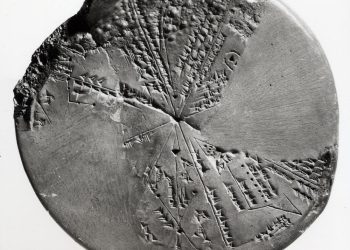Supercomputers might not be something you think about every day, but they’re behind some of the biggest breakthroughs in science and technology. From tackling climate change to finding new medicines, these machines do the kind of heavy lifting that even the best regular computers could never handle. And when it comes to powerful supercomputers, Fugaku is one of the best ever built.
Developed in Japan, Fugaku has helped scientists solve problems that would have taken years with traditional computing. But what makes it so special? Here are 10 key facts about this technological powerhouse.
1. It Was the World’s Fastest Supercomputer
For two years, Fugaku held the title of the world’s fastest supercomputer, clocking in at 442 quadrillion calculations per second. That’s an insane amount of computing power—so much so that it was nearly three times faster than the previous record holder. While newer machines have since taken the top spot, Fugaku remains one of the most powerful computers on the planet.
2. It Was Built in Japan by Riken and Fujitsu
Fugaku is the product of a collaboration between Riken, one of Japan’s leading research institutes, and Fujitsu, a major technology company. It’s located in Kobe, Japan, and plays a crucial role in scientific research—not just in Japan, but globally.
3. It Uses ARM-Based Chips Instead of Traditional Processors
Most supercomputers rely on Intel or AMD processors, but Fugaku is different. It runs on Fujitsu A64FX ARM-based chips, which makes it more energy-efficient and incredibly fast at handling complex data. It was the first ARM-powered supercomputer to reach number one in global rankings, proving that ARM chips aren’t just for smartphones.
4. It Helps Solve Real-World Problems
Supercomputers aren’t just for theoretical science—they’re used to solve real challenges. Fugaku has been involved in climate modeling, earthquake prediction, medical research, AI development, and even space exploration. Its ability to process massive amounts of data quickly makes it an essential tool for researchers across different fields.
5. It Played a Major Role in COVID-19 Research
During the pandemic, Fugaku was used to study how respiratory droplets spread in indoor spaces, helping researchers develop better social distancing guidelines. It also helped scientists analyze potential drug treatments for COVID-19, accelerating the search for effective therapies.
6. It Has Over 7 Million CPU Cores
Most high-end gaming PCs today have 8 to 32 processor cores. Fugaku? It has more than 7.6 million cores spread across 158,976 computing nodes. That’s an almost unimaginable amount of processing power, making it one of the most advanced computing systems ever created.
7. It’s Being Used to Predict Earthquakes and Tsunamis
Japan is one of the most earthquake-prone countries in the world, and Fugaku is helping scientists better understand these natural disasters. By running advanced simulations, it helps researchers improve early warning systems and predict the potential impact of major earthquakes and tsunamis—knowledge that could save countless lives.
8. It’s Now a Hybrid Quantum Supercomputer
Fugaku is already one of the most advanced supercomputers in existence, but it recently became even more powerful. Scientists have now integrated it with a quantum computer called Reimei, making it a hybrid quantum-classical system. This means it can handle even more complex calculations by combining traditional computing power with the advantages of quantum technology.
9. It’s Designed to Be Energy-Efficient
With all that power, you might assume Fugaku is an energy-hungry machine. But thanks to its ARM-based architecture, it’s actually one of the most energy-efficient supercomputers ever built. It delivers extreme performance without consuming as much power as other machines of its size, making it a leader in sustainable high-performance computing.
10. It’s Paving the Way for the Next Generation of Supercomputers
Fugaku is just the beginning. Japan is already working on its next-generation exascale supercomputer, which will be at least 1,000 times faster than today’s most powerful systems. Once completed, it will push the boundaries of what’s possible in scientific research, artificial intelligence, and beyond.
Supercomputers like Fugaku are changing the world. Scientists are using them for things like helping fight diseases, predicting disasters, and even for developing new technology. So a lot of innovations and a lot of research is in fact powered by machines we don’t often think about.











